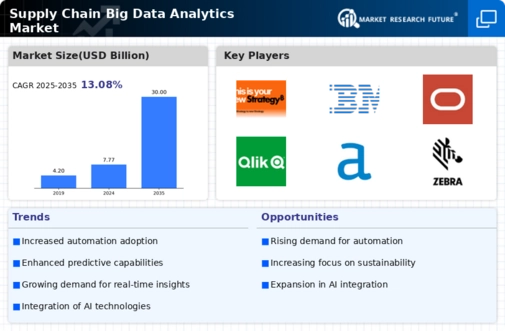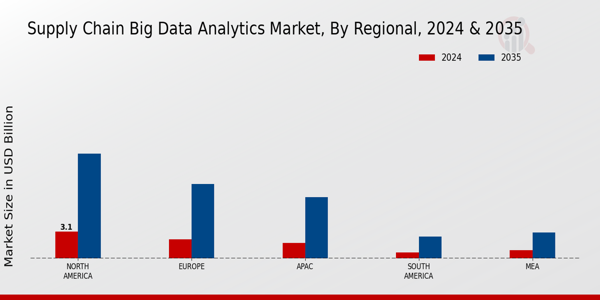The Global Supply Chain Big Data Analytics Market is an evolving sector characterized by intense competition and rapid technological advancements. Companies within this market leverage big data analytics to optimize supply chain operations, enhance decision-making, and increase overall efficiency. As businesses increasingly recognize the value of real-time data insights, there is a growing demand for advanced analytics solutions that can help organizations manage complex supply chain processes. Competitive insights reveal that key players are focusing on innovation, strategic partnerships, and the development of tailored analytics solutions to meet the specific needs of their clients.
The market landscape is shaped by the drive for efficiency and cost reduction, pushing companies to adopt cutting-edge analytics capabilities that can transform supply chain management.MicroStrategy stands out in the Global Supply Chain Big Data Analytics Market due to its strong emphasis on providing business intelligence and analytics solutions. The company's platform enables organizations to analyze vast quantities of supply chain data, thereby improving visibility and facilitating better decision-making. MicroStrategy's strengths lie in its ability to offer cloud-based and on-premises analytics solutions that empower businesses to efficiently harness their data.
This flexibility in deployment options allows clients to select a solution that best fits their operational needs. Additionally, MicroStrategy's commitment to machine learning and artificial intelligence allows for enhanced predictive analytics capabilities, enabling companies to anticipate and respond to supply chain disruptions proactively. The company's focus on user-friendly interfaces and customizable dashboards ensures that stakeholders at all levels can derive actionable insights from the data.IBM plays a significant role in the Global Supply Chain Big Data Analytics Market by providing a suite of advanced analytics tools tailored to supply chain optimization.
The company has leveraged its technological expertise to integrate artificial intelligence and big data analytics into its offerings, empowering organizations to gain deeper insights into their supply chain processes.
IBM's strengths lie in its robust analytics frameworks, which include predictive analytics and cognitive computing capabilities. These advanced technologies enable clients to optimize inventory levels, enhance logistics performance, and improve supplier collaboration. IBM's focus on developing comprehensive analytics solutions that include real-time data processing allows businesses to navigate complex supply chain challenges with higher agility. Furthermore, IBM's strong presence in the enterprise sector and its reputation as a trusted technology provider enhance its competitive edge, enabling it to forge strategic alliances and expand its market reach effectively.

























Leave a Comment